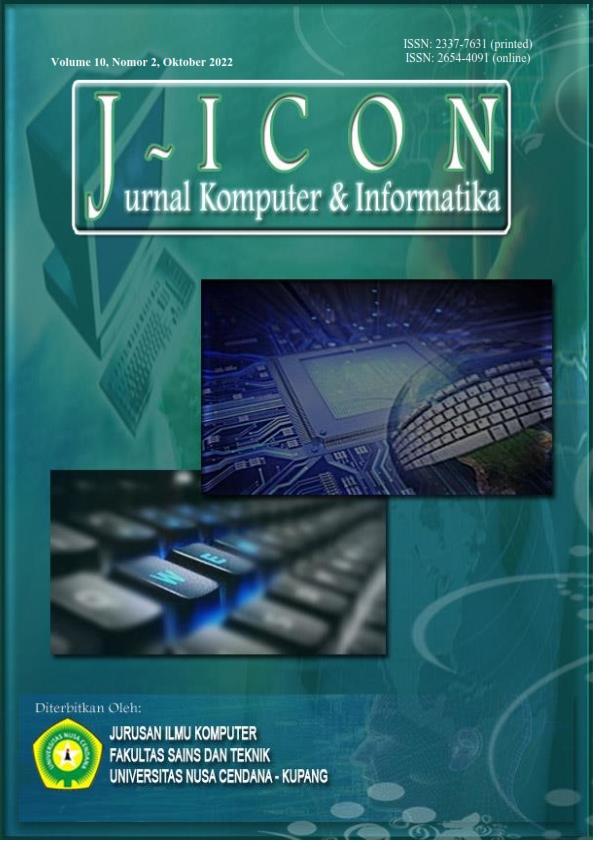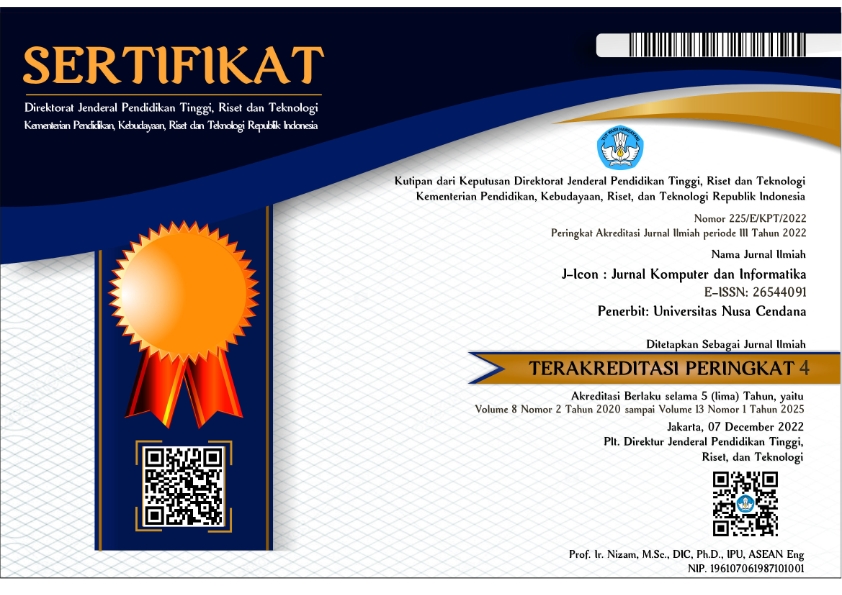DEVELOPMENT OF MOBILE APPLICATION FOR WEST SULAWESI LOCAL TOURISM SERVICES USING FLUTTER FRAMEWORK
Case Study of Tourism Services in West Sulawesi Province, Especially Majene and Polewali Mandar Regencies
Abstract
One of the provinces in eastern Indonesia, namely West Sulawesi, has many types of tourist attractions. Many of these tourism objects have not been managed optimally by the managers or the government. Currently, there is still no available information platform that can provide detailed information regarding local tourism services available in West Sulawesi Province. This study aims to create an application product that can make it easier for tourists who will visit to find information on local tourism in West Sulawesi. Waterfall is a systematic and sequential application development method at each stage starting from the analysis stage to the implementation stage. Flutter is used as a framework for mobile application development that makes it easy to create application user interfaces. This application has succeeded in providing information related to local tourism services in West Sulawesi Province according to actual data from tourism services. Based on Alpha and Betha testing using the BlackBox method, the results in the Alpha test were that there were no functionality errors in the application, while the Betha test which was carried out directly to the user obtained the results that the application had an attractive appearance, was easy to use, informative, quite easy to understand and useful for users.
Downloads
References
C. A. Cholik, “Pemanfaatan teknologi informasi dan komunikasi untuk meningkatkan pendidikan di Indonesia,” Syntax Literate; Jurnal Ilmiah Indonesia, vol. 2, no. 6, pp. 21–30, 2017.
N. R. Kirom, S. Sudarmiatin, and I. W. J. A. Putra, “Faktor-Faktor Penentu Daya Tarik Wisata Budaya Dan Pengaruhnya Terhadap Kepuasan Wisatawan,” PhD Thesis, State University of Malang, 2016.
S. P. Roger and R. M. Bruce, Software engineering: a practitioner’s approach. McGraw-Hill Education, 2015.
M. H. Masruri and J. Creativity, Buku Pintar Android. Elex Media Komputindo, 2015.
V. Lee, H. Schneider, and R. Schell, Mobile applications: architecture, design, and development. Prentice Hall PTR, 2004.
M. L. Napoli, “Introducing Flutter and Getting Started,” Beginning Flutter: A Hands-on Guide to App Development; Wrox: Indianapolis, IN, USA, pp. 3–25, 2019.
A. Nugroho, Rekayasa perangkat lunak berorientasi objek dengan metode USDP. Penerbit Andi, 2010.
R. S. Pressman, “Rekayasa Perangkat Lunak, edisi 7,(diterjemahkan oleh: Nugroho, A, Nikijuluwm GJL, Rochadiani, TH, Wijaya, IK) Penerbit Andi.” Yogyakarta, 2010.
M. S. Mustaqbal, R. F. Firdaus, and H. Rahmadi, “Pengujian aplikasi menggunakan black box testing boundary value analysis (studi kasus: Aplikasi prediksi kelulusan smnptn),” Jurnal Ilmiah Teknologi Infomasi Terapan, vol. 1, no. 3, 2015, doi: https://doi.org/10.33197/jitter.vol1.iss3.2015.62.
M. Shalahuddin and R. A. Sukamto, “Rekayasa Perangkat Lunak Terstruktur dan Berorientasi Objek (Vol. Cetakan Kedua),” Bandung: Informatika, 2014.
J. Suhartono, “ALPHA TESTING,” School of Information Systems. https://sis.binus.ac.id/2016/12/16/alpha-testing/ (accessed Jun. 07, 2022).
R. AS and M. Shalahuddin, “Rekayasa Perangkat Lunak (Edisi Revisi),” Bandung: Informatika Bandung, 2018.
T. A. Kurniawan, “Pemodelan use case (UML): evaluasi terhadap beberapa kesalahan dalam praktik,” J. Teknol. Inf. dan Ilmu Komput, vol. 5, no. 1, p. 77, 2018, doi: 10.25126/jtiik.201851610.
Copyright (c) 2022 Sultan Jorgi, Asmawati S, Nuralamsah Zulkarnaim

This work is licensed under a Creative Commons Attribution 4.0 International License.
The author submitting the manuscript must understand and agree that if accepted for publication, authors retain copyright and grant the journal right of first publication with the work simultaneously licensed under a Creative Commons Attribution (CC-BY) 4.0 License that allows others to share the work with an acknowledgment of the work’s authorship and initial publication in this journal.
 Sultan Jorgi(1*)
Sultan Jorgi(1*)




